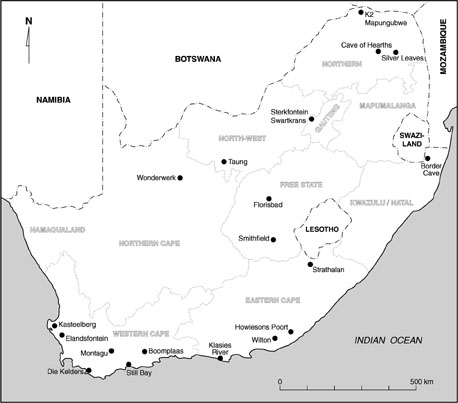

 | Page 59 |  |
curiosities that gave the initial impetus to archaeological studies in the subcontinent. Thomas Holden Bowker is credited with being the first person to recognize and make a collection of stone artifacts. The year was 1858, and the location was in the sand dunes near the mouth of the Great Fish River in Eastern Cape Province (Hewitt 1955). In 1866, a collection of forty-one of those artifacts was donated to the Royal Artillery Museum in Woolwich, London, where the items were kept for almost 100 years before being returned to South Africa; they are now part of the collections of the Albany Museum in Grahamstown.

South African Prehistoric Sites
Bowker may have been aware that artifacts of stone preceded those made of iron because he assumed they were not made by present-day people, like the Xhosa, who were metalworkers. It seems to have been the regular triangular shape of the pieces that forced his recognition that they were artificially made, and his immediate conclusion was that they served as spear points. They are a series of middle–Stone Age blades and points. The importance of Bowker’s observation was that once stone artifacts had been recognized, they were recorded at surface sites in many different parts of the country by Victorian collectors.
The active collectors were professional people like teachers, clergy, lawyers, and medical doctors. Later, they were joined by geologists as the country was opened up to prospecting for diamonds and other minerals. These were schooled observers, aware of their environment and motivated to learn about the land, the diversity of its peoples, and its history. The ability